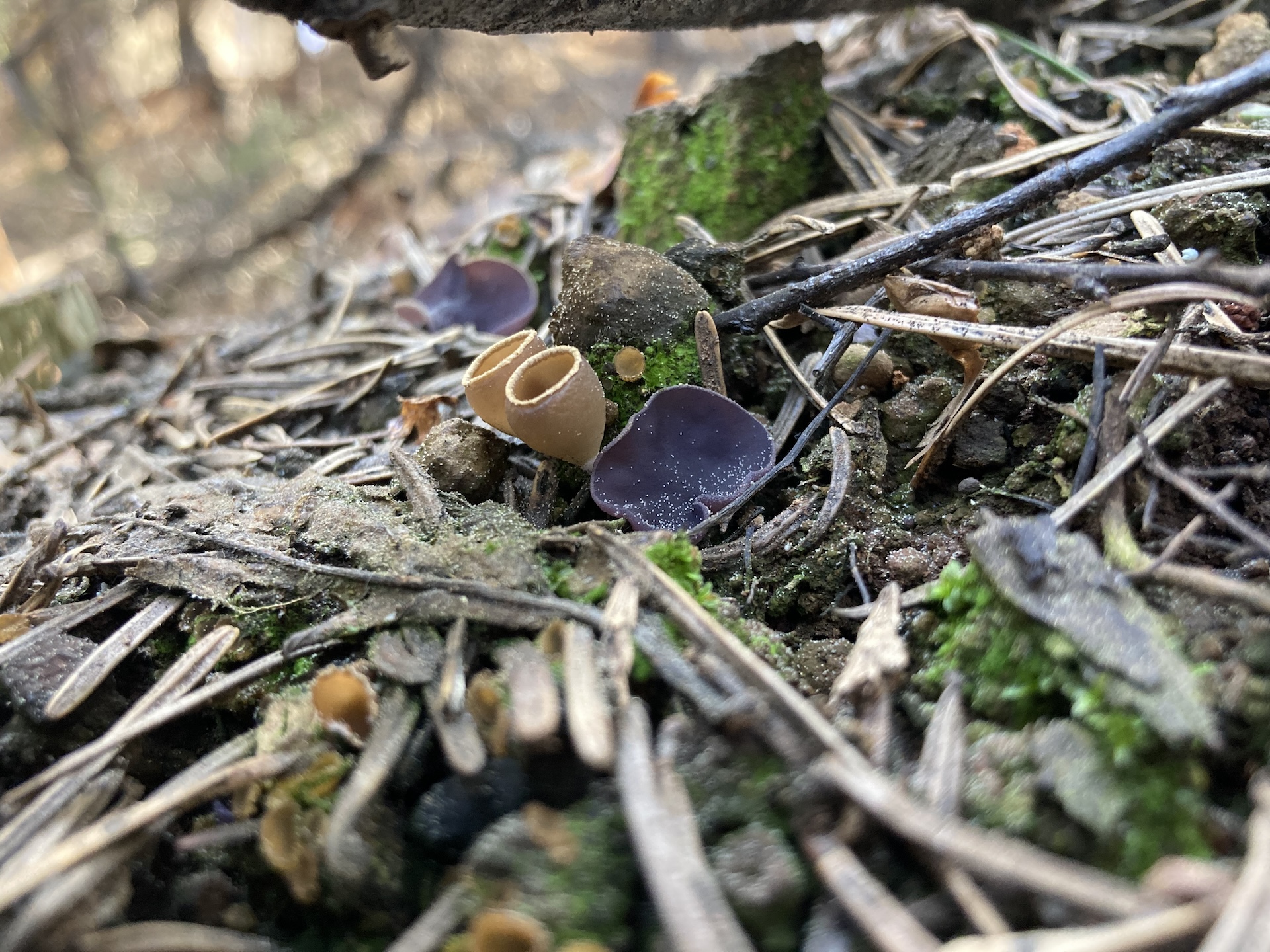Top Stories
Urgent Update: Fire-Loving Fungi Emerge to Revive B.C. Forests

UPDATE: As British Columbia grapples with increasingly severe wildfire seasons, new research from the University of British Columbia (UBC) reveals a remarkable recovery mechanism at play: fire-loving fungi. Assistant Professor Dr. Monika Fischer has identified these resilient organisms, known as pyrophilous fungi, which thrive in burned landscapes, offering crucial support for forest recovery following destructive fires.
With fall rains now drenching the province, these vibrant fungi are emerging, transforming charred soil into a spectacular array of colors. Pyrophilous fungi, unlike typical mushrooms, are specialized organisms that appear exclusively after fire. They belong to the Ascomycota group and feature striking, cup-shaped fruiting bodies. Notable species include Pyronema, with its neon orange crust, Geopyxis, displaying brown cups with white rims, and Peziza, which adds a delightful splash of purple.
Once moisture returns, these fungi can sprout within weeks, significantly contributing to the recovery process. In areas near creeks or wetter regions, they can appear astonishingly fast. Dr. Fischer’s studies show that Neurospora can emerge in just weeks, playing a pivotal role in soil stabilization and nutrient cycling. Their thread-like structures, or hyphae, bind the soil, preventing erosion and enhancing water absorption in burned areas. Additionally, these fungi break down charcoal, releasing critical carbon and even digesting tough chemical pollutants, promoting environmental recovery.
What’s more, research indicates that consistent fungal species appear after fires globally, regardless of the ecosystem type. Following the catastrophic wildfires in California in 2020, Dr. Fischer found that Pyronema and Anthracobia were uniformly present across diverse burnt landscapes. This pattern suggests these fungi lie dormant in the soil, waiting for the right conditions to thrive, which raises intriguing questions about their origins and survival strategies.
As the public becomes increasingly aware of these remarkable organisms, some may wonder if they can forage for edible fire fungi. The well-known morel mushroom, which often grows in previously burned areas, is popular among foragers. However, the smaller cup fungi like Pyronema are not worth the effort, as they are tiny and not suitable for consumption. Foragers are reminded to always identify mushrooms carefully and adhere to local fire authority guidelines before venturing into burned sites.
For those eager to witness these colorful fungi, now is the time to visit areas that burned this past summer. Reports confirm that growth is already visible in B.C.’s burn zones, with Pyronema fruiting just weeks after September fires, including sites managed by the Department of National Defence near Victoria. Fungal enthusiasts should mark their calendars for next spring, as these areas are expected to yield morel mushrooms and other post-fire fungi.
As British Columbia continues to face the challenges of climate change and increasing wildfire activity, the emergence of these fungi provides a glimmer of hope. Their role in revitalizing devastated landscapes underscores the resilience of nature and the importance of understanding these hidden helpers in our ecosystems. Stay tuned for more updates on the ongoing research and the vital role fire-loving fungi play in forest recovery.
-

 World3 months ago
World3 months agoScientists Unearth Ancient Antarctic Ice to Unlock Climate Secrets
-

 Entertainment3 months ago
Entertainment3 months agoTrump and McCormick to Announce $70 Billion Energy Investments
-

 Lifestyle3 months ago
Lifestyle3 months agoTransLink Launches Food Truck Program to Boost Revenue in Vancouver
-

 Science3 months ago
Science3 months agoFour Astronauts Return to Earth After International Space Station Mission
-

 Technology2 months ago
Technology2 months agoApple Notes Enhances Functionality with Markdown Support in macOS 26
-

 Top Stories2 weeks ago
Top Stories2 weeks agoUrgent Update: Fatal Crash on Highway 99 Claims Life of Pitt Meadows Man
-

 Sports3 months ago
Sports3 months agoSearch Underway for Missing Hunter Amid Hokkaido Bear Emergency
-

 Politics3 months ago
Politics3 months agoUkrainian Tennis Star Elina Svitolina Faces Death Threats Online
-

 Technology3 months ago
Technology3 months agoFrosthaven Launches Early Access on July 31, 2025
-

 Politics3 months ago
Politics3 months agoCarney Engages First Nations Leaders at Development Law Summit
-

 Entertainment3 months ago
Entertainment3 months agoCalgary Theatre Troupe Revives Magic at Winnipeg Fringe Festival
-

 Politics2 weeks ago
Politics2 weeks agoShutdown Reflects Democratic Struggles Amid Economic Concerns





















